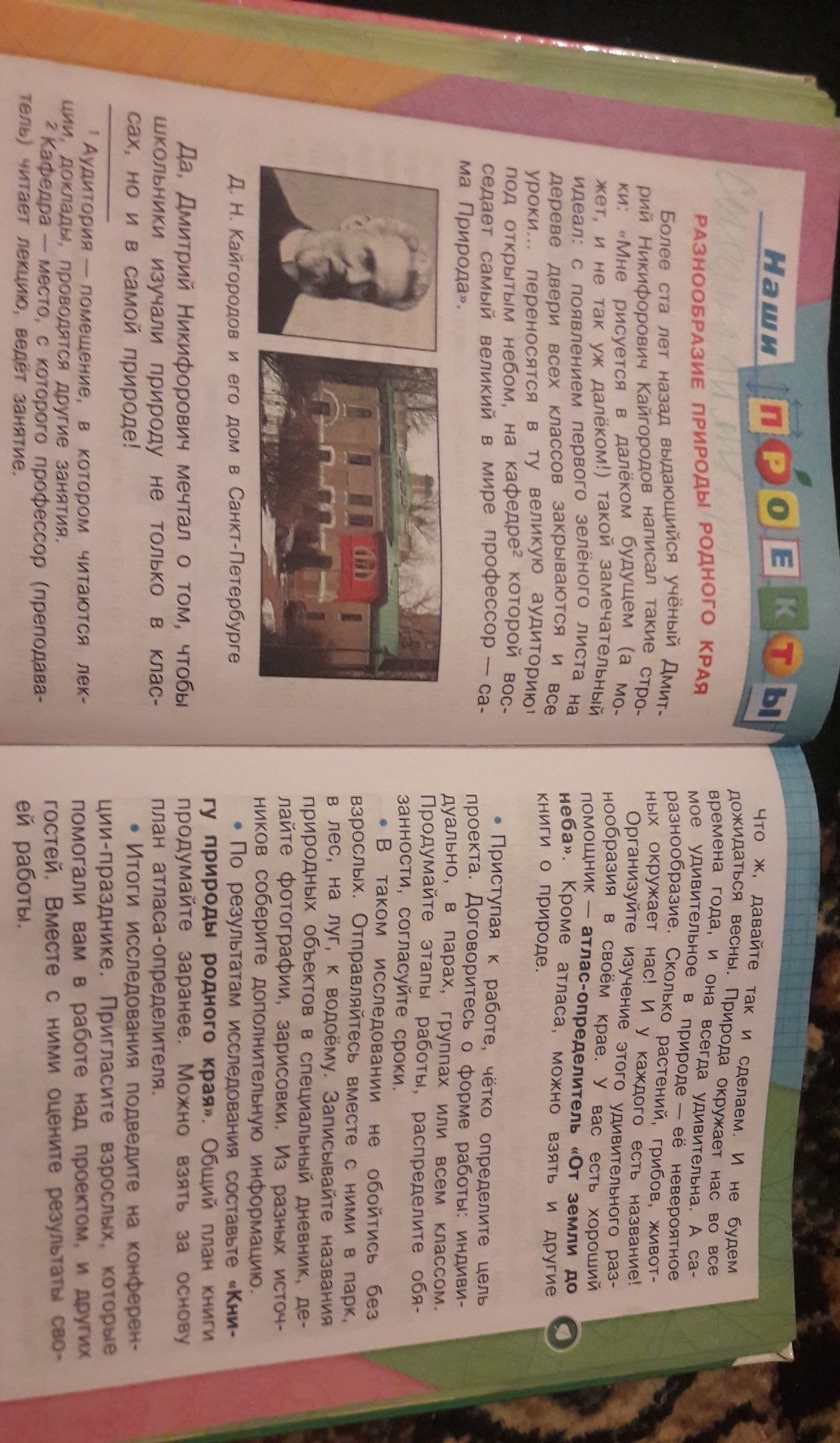наши проекты разнообразие природы родного края 3 класс окружающий мир

Ответы
Московское разнообразие природы:
В Москве насчитывают свыше 1600 видов растений. Много из них занесены в Красную книгу. К таковым относятся:
Волчеягодник, ландыш, калужница, хохлатка и земляника.
Гуляя в парках Москвы можно увидеть деревья. Например: ель, сосна, липа, ясень. В подлеске встречаются калина, рябина, жимолость. Из травянистых растений: фиалка, кислица, лютик.
Животный мир города также разнообразен. Здесь можно встретить 160 видов птиц, более 30 видов млекопитающих, около 15 видов рыб и несколько видов земноводных.
В реке-Москве водятся рыбы как: лещ, плотва, щука, ёрш.
В московских парках обитают: зайцы, лисы, ласки, землеройки.
Типичные московские птицы ворона и голубь, но в парках можно встретить ласточку трясогузку, мухоловку. Реже соловьи и чибисы, перепел. В прудах обитают утки и чайки.
Встречаются и земноводные: тритон, зеленая жаба, лягушка.
В Москве мало насекомых, среди которых больше всего вредителей: тля, клещи, щитовки. Очень мало в городе и дневных бабочек.
Надеюсь, что поможет. Удачи в учебе!